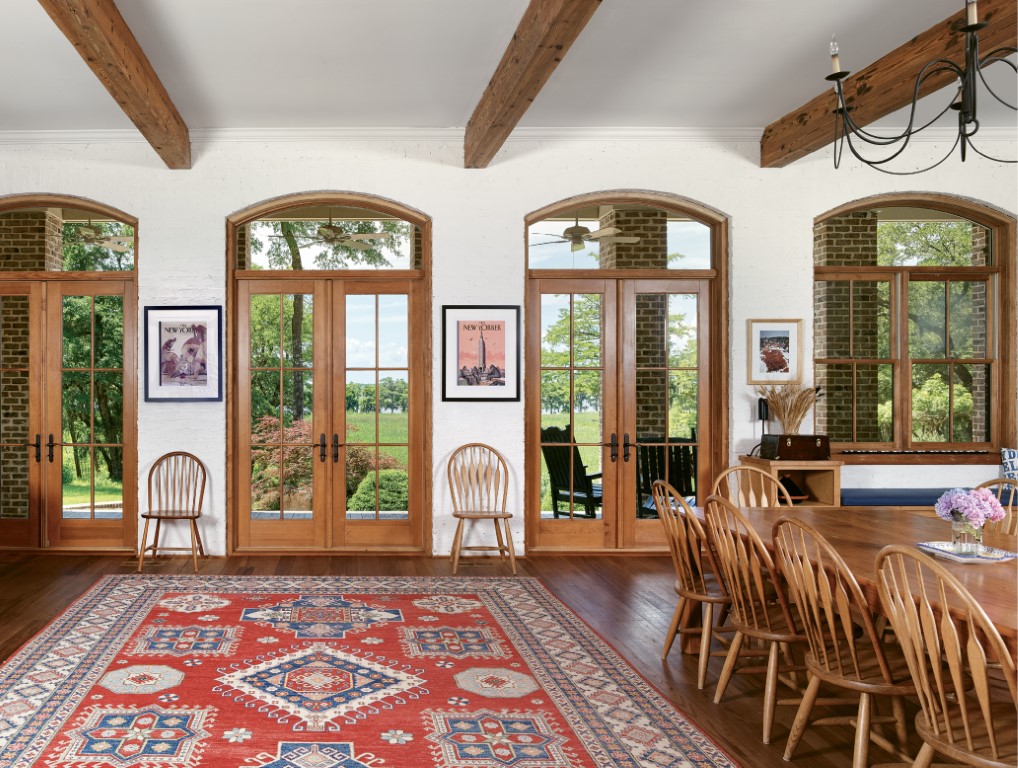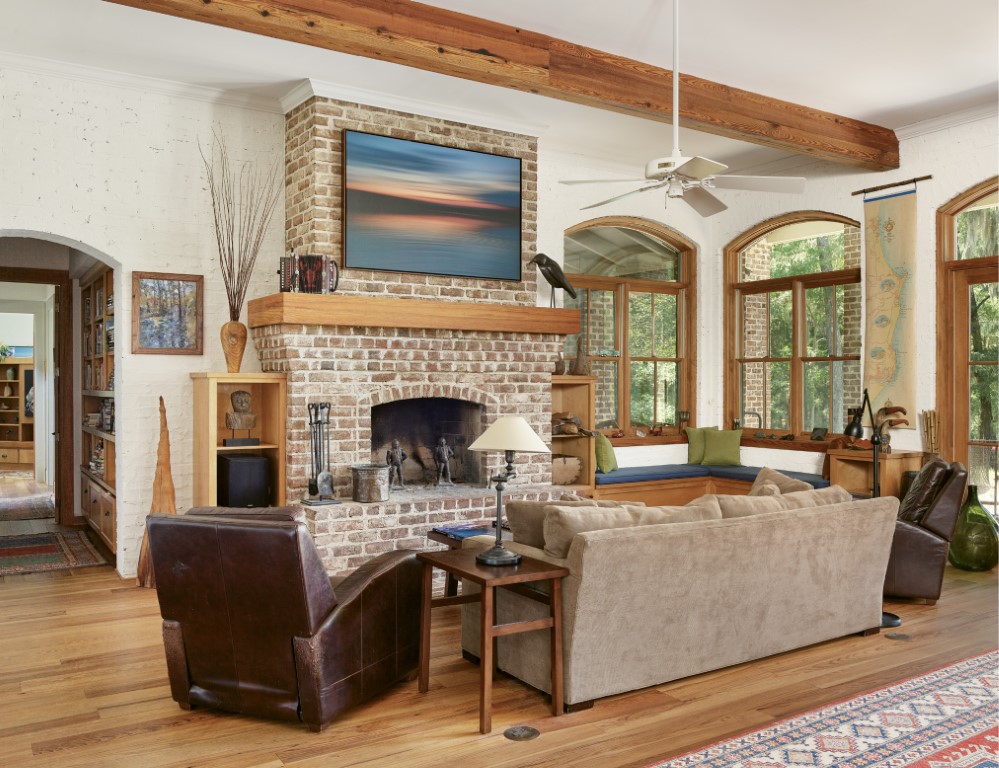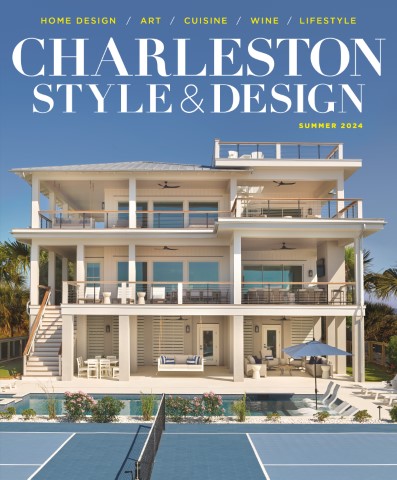
Standing on the second-story wraparound porch with a cup of warm coffee in hand, you’re enveloped by the sounds of local wildlife, the breeze blowing through the oak trees and the view of the Waccamaw River beyond undisturbed land.
The house on Rice Bluff Road is just one of a few abodes in Prince George, a place where the speed limit is low, doors are often unlocked and your closest neighbors are the herons flying through the wetlands—the epitome of Lowcountry living.
“This is for someone who appreciates the setting, the beauty, the peacefulness, the eclectic-ness of the house, the coolness of the community,” says Geoff Groat, an associate with Peace Sotheby’s International Realty.

The home is on the market and in search of a family yearning for not just the natural scenery but also the history and essence of a community that has strived to stay small and maintain its charm. Shopping and amenities are about a 10-minute drive away, but when you’re surrounded by the bluffs, it can be easy to forget.
It’s something residents around here love.

Telling the story of the more than 5,600-square-foot home includes telling the backstory of Prince George, an exclusive community just south of Pawleys Island on the Waccamaw Neck. Residents enjoy access to the wetlands, rice paddies, the ocean and the river, so it only makes sense that conservation is top of mind here. After more than three decades of fighting development, locals can boast that the island has 1,065 acres of protected land. Only 150 single-family units will be built, ranging in lots from three-quarters of an acre to 15 acres of land, including this home situated on 2 acres of property.
To the west is a 28-slip marina, one of which is deeded to the home to allow easy access to the river and ocean for a day out on the water. While the Prince George community feels quite isolated, it’s just minutes away by car to the clubhouse, an endless selection of golf courses, shopping, restaurants and houses of worship.

First settled by colonists in the early 1700s, Pawleys Island became known for rice plantations, helping Georgetown County come second in the world only to Calcutta, India, in rice production. Simultaneously, the island became a seaside getaway for families. With the end of the Civil War and the emancipation of enslaved people, the community sold its tracts of land to timber companies, and Northerners bought up acreage to build hunting lodges, which includes the Vanderbilt family’s Arcadia Plantation. Generations of residents, both full-time and part-time, grew up along the banks of the Waccamaw River and watched the peaceful island maintain its charm—including the Lowcountry traditional architecture—and “keep Pawleys as it is.”
“There’s a long and storied history here of these properties,” says Groat. “This area is quieter and sort of under the radar. You’re not in the middle of the chaos. It’s a lovely place where you just let your hair down and walk your dog on the beach.”
Pulling up to the estate, visitors are greeted with the main residence flanked by two guest quarters. While the home was built in 2002—quite young compared to the manses in the area—the design was inspired by the stylings of Louisiana architect A. Hays Town. Having lived in New Orleans, the homeowner was drawn to Town’s eclectic Southern musings that leaned on natural materials, lending to a brick facade, walkway and columns with teal wooden shutters.

“It is architecturally striking,” Groat says. “He built a house based upon the architecture of a guy who was designing houses in the style of the 1700s and 1800s but with a modern twist.”
The brick continues into the entryway of the home, giving way to naturally finished wood floors in the open-concept first floor. Exposed pine beams bring the outside in and contrast against the white walls. The focal point of the living area is a brick fireplace, where the homeowner has hung a painting of a Lowcountry sunset. The space seamlessly flows into a rustic kitchen, fit with wooden cabinets, a dark marble island and a brick arch and backsplash over the stove.
The slight segmental arches are seen throughout the first floor, in contrast with the more angular shapes of the second story. Going up the staircase, one finds more modern touches in the taupe door frames and sage cabinetry. The main bedroom includes a spacious his-and-her bathroom, including a freestanding tub. The galley-style walk-in closet was built with personalized touches that a frequent traveler will appreciate—a lower set of drawers is flanked by taller dressers, allowing for a suitcase to be placed in between for packing and unpacking.
While the property includes two separate guest quarters, which could also be used as a mother-in-law suite, the main residence also includes space for guests. The home office includes a bedroom nook, and the loft above the garage is also outfitted for visitors, much like a carriage house from yesteryear.
The unique touches don’t end within the walls of the home, though. The homeowner also paid special attention to the landscaping, wanting to create a wild yet manicured outdoor living space that could be appreciated throughout the year. Native plants live alongside the forest of oak trees, leading to Adirondack chairs surrounding a firepit with views of the Waccamaw River. An outdoor dining table is also included for dinner under the stars. When trees were cut down to allow for more space, the homeowner creatively converted the stumps into bistro tables to set down a glass of wine. Beyond these entertaining spaces are stepping-stones that lead to the bluffs, with Spanish moss dripping from tree branches.
“The landscaping is really interesting in that it fits along with the eclectic nature of the house,” Groat notes. “There’s a lot of natural landscaping, and there has been some space opened up so you can have a view along the rice fields to the river.”
The yard also includes a dovecote that has been used as a potting shed, perfect for homeowners with a green thumb who would want to continue caring for the home’s herb garden. A Zen garden was also built alongside the house, with a hot tub surrounded by lush greenery and a sculpture garden.
“There are all kinds of wonderful things within the house,” Groat says of the unique details. “There are a lot of houses out there, but there’s nothing quite like this.” *
Christiana Lilly is a freelance journalist in Pompano Beach, Florida. See more of her work spanning the arts, community news and social justice at christianalilly.com.

